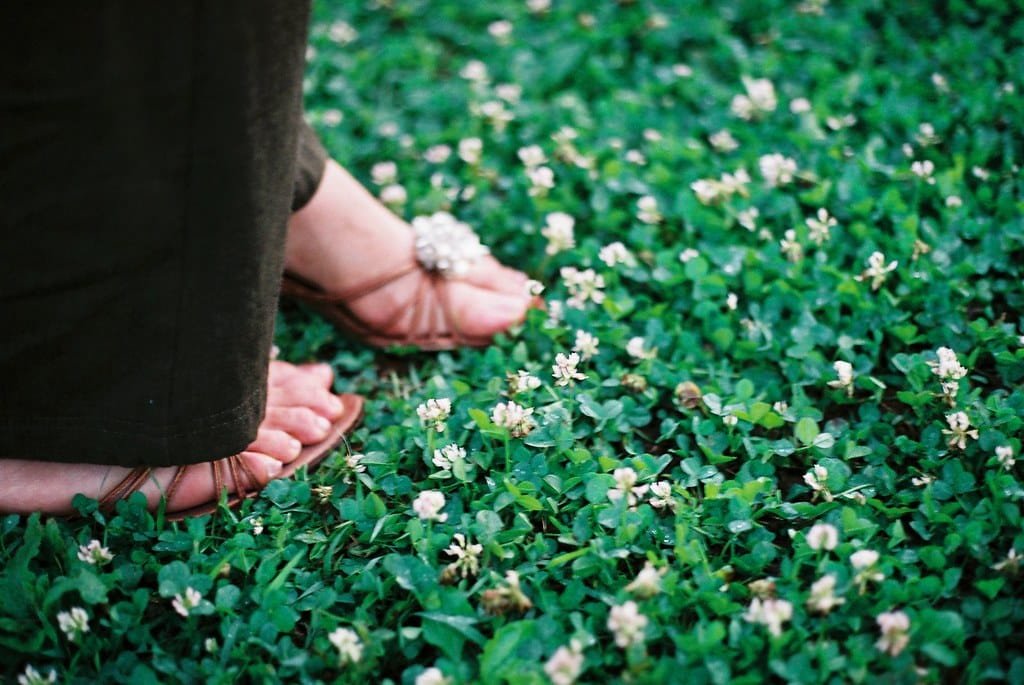Three Ways to Lose the Lawn

Reimagining Your Lawn: And you don’t have to rip up your entire lawn to make a meaningful change.
It may be time for your yard to do more for the planet and pollinators. Or, you’re too tired to mow. It could be time to improve your sense of peace.
This guide walks you through manageable steps to get there.
Step 1: Start by Observing
Before making changes, spend a week or two paying attention to your yard:
- Where does the grass struggle?
- Which areas do you never walk on?
- Do you get full sun, partial shade, or a mix?
These observations will help you plan a yard that actually works with your space, not against it.
Step 2: Choose Your Goal
Pick a small, meaningful shift that excites you. Some popular options:
- A low-maintenance bee lawn
- A pollinator garden
- A veggie or herb patch
- A native plant section with zero mowing
- Leave a swath of lawn as soft paths to walk on while you admire your new space. Make them as wide as your lawn mower’s swath.
You don’t need to do it all — choose what feels doable this season.
Step 3: Shrink the Lawn Gradually
No need for a dramatic overhaul. Pick a patch—maybe the tricky corner that never stays green—and begin there. You can:
- Sheet mulch (lay cardboard, then compost and soil) to smother grass without digging
- Use a sod cutter or shovel if you’re ready for more immediate results
Step 4: Add Soil and Plants
Depending on your choice:
- For bee lawns, sow seeds like white clover, self-heal, or low-growing yarrow into existing grass.
- For garden beds, build up healthy soil with compost before planting natives or edibles.
- Use mulch to reduce weeds and retain moisture
Tip: Choose low-maintenance, drought-tolerant plants native to your region—they’re adapted to your climate and support local wildlife.
Step 5: Water Wisely While Establishing
New plantings need consistent water at first, but the goal is a more self-sufficient yard long term. Native and adapted plants will reward you with resilience.
Step 6: Let It Evolve
Changing your lawn is a process. Some things will thrive; others may not. That’s okay. Let your yard grow with you. Each season, reassess what’s working and make small changes.
Keep It Looking Loved
One secret to a bit of order? Clear edges and intentional design. Even wildflower patches and native gardens look tidy with borders, paths, or a sign that says, “Pollinator Garden in Progress.”
A more eco-friendly yard doesn’t have to be a wild leap — it can be a slow shift, one patch at a time. A
nd every square foot you change helps. And remember to use different types of plants that bloom in different seasons.
How to sow Wildflower Seeds into Your Lawn
Why It’s Tricky
Yes, you can throw seeds into six-inch grass—but your wildflowers will thank you if you mow it down and rough up the soil a bit first. Even 30 minutes of prep makes a big difference.
- Grass Dominates: Existing grass (especially taller or established turf) competes hard for light, water, and nutrients. Wildflower seeds, being small and shallow-rooted, often lose that battle.
- Seed-to-Soil Contact Is Key: Wildflower seeds need direct contact with soil to germinate. If they land on grass or thatch, they’ll dry out or get eaten before sprouting.
If you’re aiming for the “toss it and hope for the best” route:
- Mow first, then sow. Cut the grass short (1–2 inches), rake out some thatch or scratch the soil with a hard rake, and then scatter your seeds.
- Time it right: Sow before rain is expected, so seeds get watered in naturally.
- Choose tough wildflowers: Some hardy species (like Black-eyed Susan, Yarrow, or Red Clover) stand a better chance in rough conditions.
For Better Results (Still Low-Maintenance)
- Create patches: Mow and rake bare spots or lightly disturb the soil in a few areas before seeding. You don’t have to clear the whole lawn—just give the seeds a fighting chance in little “islands.”
- Seed in fall or early spring: Fall is great because many wildflower seeds benefit from cold stratification (a natural freeze-thaw cycle), and grass is less aggressive then.
